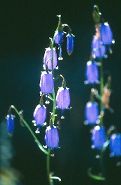 The precious landscapes and biological diversity of the steppes of Mongolia are the life source and a matter of pride for Mongolian people. But they also are of global importance, because they contribute to Central Asia’s ecological balance and provide homeland for numerous globally threatened and endangered species. Of all plants growing in Mongolia, 100 species are listed in the Mongolian Red Book as rare or endangered and numerous globally threatened and endangered animal species live here. Wildlife still found in Mongolia, includes wild relatives of domestic animals we use daily and which have changed human civilisation, like Argali sheep, wolf and the wild horse, the Przewalski horse. The gene-pool of these species may hold important information for improving livestock, curing diseases and many other, yet undiscovered, benefits. Mongolia’s unique vegetation could play an important role in developing new crops and medicines.
The precious landscapes and biological diversity of the steppes of Mongolia are the life source and a matter of pride for Mongolian people. But they also are of global importance, because they contribute to Central Asia’s ecological balance and provide homeland for numerous globally threatened and endangered species. Of all plants growing in Mongolia, 100 species are listed in the Mongolian Red Book as rare or endangered and numerous globally threatened and endangered animal species live here. Wildlife still found in Mongolia, includes wild relatives of domestic animals we use daily and which have changed human civilisation, like Argali sheep, wolf and the wild horse, the Przewalski horse. The gene-pool of these species may hold important information for improving livestock, curing diseases and many other, yet undiscovered, benefits. Mongolia’s unique vegetation could play an important role in developing new crops and medicines.
With each extinction, a part of the world’s genetic heritage disappears forever. Protecting the world’s biodiversity today means that future generations can live on a healthy and diverse planet. Our children and their children will benefit from the enormous genetic potential of biodiversity. And they will still be able to see real wild animals, like the Przewalski horse, in their own environment.
To conserve the species and their genetic diversity in the long term, two important techniques must be used:
- a sustainable ecosystem must be restored and built up on genetic and geographic principles and
- nature management must be integrated in social-economic processes which allows local people to benefit from conserving wild flora and fauna where possible.
